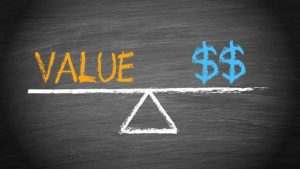Negotiating Tip #51:
When to Up an Obvious Opportunity

When negotiating, the obvious temptation is to buy the best-known product, to sell to the biggest customer. And that is often the best thing to do – but not always. Sometimes the better strategy is to go for the overlooked – the second-tier product may be available at a much better price, the less-known customer may be more willing to agree to better terms.
To understand this principle, consider the 2021 March Madness NCAA men’s tournament. The overwhelming favorite is unbeaten Gonzaga. As explained in Ben Cohen and Andrew Beaton’s Wall Street Journal article “Here’s a Tournament Tip: Don’t Take Gonzaga” (https://www.wsj.com/articles/ncaa-tournament-bracket-march-madness-picks-gonzaga-11615820765) , statistical guru Ken Pomeroy puts Gonzaga’s odds of winning the title at 34.6%, but Gonazaga is listed as the winner on 39.5% of ESPN’s contest brackets and 43.6% of Yahoo’s. So actually the odds are not in your favor.
By contrast, Pomeroy puts the Houston Cougars’ chances at 7.3%, the highest of any No. 2 seed in the tournament. But Houston only gets 2.2% of ESPN’s brackets and 1.7% of Yahoo’s. That is the biggest gap between a team’s actual chances and the public’s perceptions of the team’s chances. In other words, Houston probably won’t win but it is a good bet. As Cohen and Beaton put it, “They’re really good and nobody seems to know they’re really good.”
That is the kind of company you should focus on as a negotiator – not necessarily the best company but the most undervalued company. Having them as a customer will pay off as they grow and their reputation rises, and they are less likely to demand tough terms than will their famous competitor. Having them as a supplier will give you a great input and probably at a fairer price than the well-known alternative.
